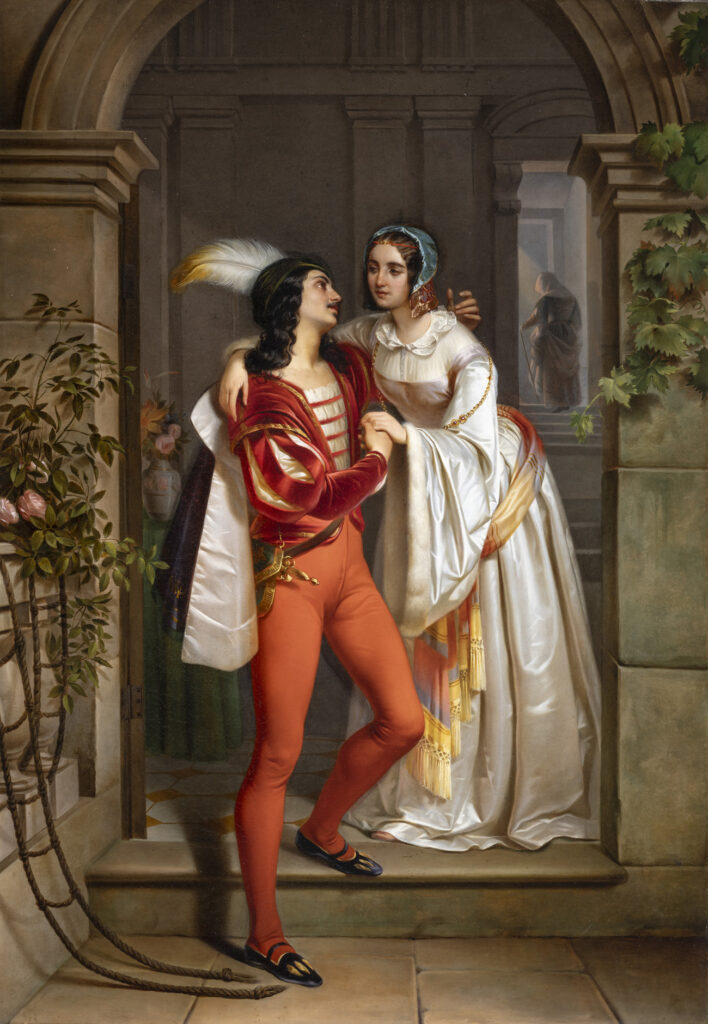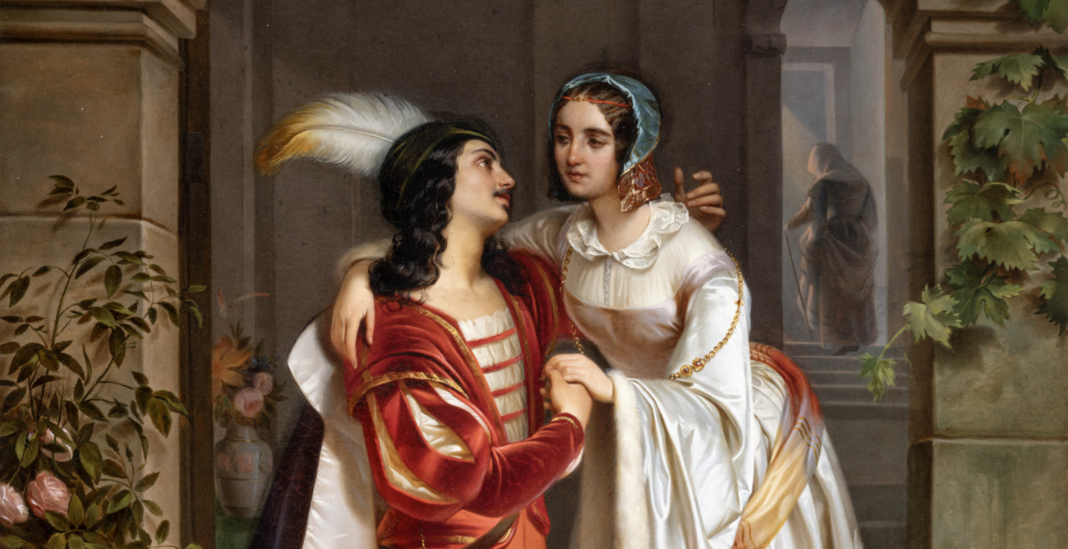Starting March 6th, 2024 at 11 am, the Civic Museums of Verona will showcase a significant artwork by Venetian painter Cosroe Dusi in the newly arranged space of Juliet’s House. The painting, titled “Juliet and Romeo” from 1838, captures the clandestine rendezvous of the famous lovers within the walls of the Capulet residence. After nearly two centuries since its last public display, this piece, once thought lost, has been rediscovered and acquired as part of an initiative to revitalize Juliet’s House. It will now permanently enrich the museum experience for visitors, adding depth to the cultural exploration of the site.
“Juliet and Romeo” by Cosroe Dusi

The painting, a sizable oil on canvas measuring 218 x 164 centimeters, is in pristine condition and showcases Romeo tenderly embracing Juliet as they exchange loving glances on what appears to be a balcony or loggia. The emotional depth of the lovers is palpable, accentuated by the intricate details of their attire, with Romeo clad in a vibrant red robe and Juliet adorned in white. Created during a period of artistic maturity for Cosroe Dusi, the piece reflects his transition towards Romantic-style history painting, influenced by the likes of Francesco Hayez. In 1838, Dusi exhibited this work, among others, at the Accademia in Venice during an event commemorating the visit of Emperor Ferdinand I of Austria. Commissioned by Count Francesco Gualdo of Vicenza, documents from the Bertoliana Library in Vicenza confirm the painting’s origin and the payment for its creation, as well as its elegant gold-leaf frame sourced from Milan. However, the subsequent whereabouts of the artwork remain a mystery, likely passing through the hands of the Count of Vicenza’s esteemed family before potentially entering the antiques market after the mid-19th century.
Dusi’s painting gained widespread recognition in its iconographic journey. By 1841, it was already featured in an engraving based on a lost drawing by Lilburne Hicks, an English illustrator who likely encountered Dusi’s artwork in Venice. This engraving was subsequently utilized in various publications, magazines, and even circulated as postcards in the early 20th century.
Recently rediscovered by Professor Sergio Marinelli and analyzed by Elena Lissoni and Fernando Mazzocca, the painting returns to Verona after being loaned for an exhibition at the Accademia Carrara in Bergamo. This exhibition, part of the city’s Capital of Culture 2023 initiatives under the theme “Tutta in voi la luce mia. Painting History and Melodrama,” was curated by Fernando Mazzocca and Mariacristina Rodeschini.
Further Information
- Civic Museums of Verona – Juliet’s House
- Address: via Cappello 23, Verona
- Telephone: +39 045 8062611
- museo@comune.verona.it
- casadigiulietta.comune.verona.it
- Open beginning on March 7, 2024
- Hours: Tuesday to Sunday from 9am to 7pm, closed on Mondays
- Entrance is included in the museum entrance ticket.
- Tickets online only, rates on the website: casadigiulietta.comune.verona.it




